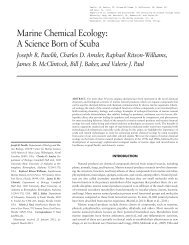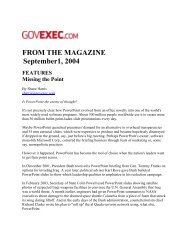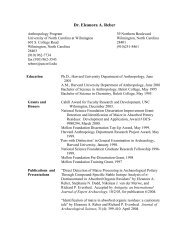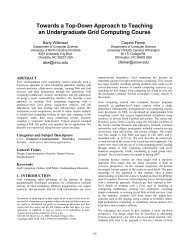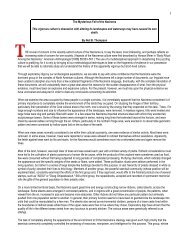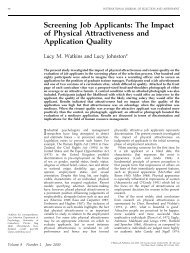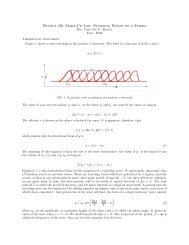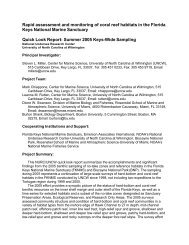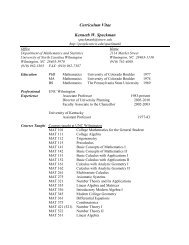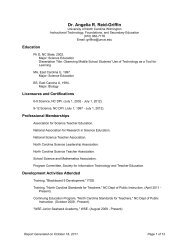Hargreaves, "Perceptions of Ethnic Difference in Post-War France"
Hargreaves, "Perceptions of Ethnic Difference in Post-War France"
Hargreaves, "Perceptions of Ethnic Difference in Post-War France"
You also want an ePaper? Increase the reach of your titles
YUMPU automatically turns print PDFs into web optimized ePapers that Google loves.
<strong>Ethnic</strong> <strong>Difference</strong> <strong>in</strong> <strong>Post</strong>-<strong>War</strong> France 15<br />
While work<strong>in</strong>g at one level <strong>of</strong> the popular imag<strong>in</strong>ation to narrow the<br />
category <strong>of</strong> immigrants by remov<strong>in</strong>g Europeans from the frame, color also<br />
works <strong>in</strong> the opposite direction by add<strong>in</strong>g large numbers <strong>of</strong> non-immigrants to<br />
those who are perceived as immigrants. Born <strong>in</strong> the country where their parents<br />
or grandparents settled, the descendants <strong>of</strong> post-colonial migrants are not themselves<br />
immigrants, but they are <strong>of</strong>ten perceived as such by the majority ethnic<br />
population. Even when majority ethnic observers know that they are look<strong>in</strong>g at<br />
people born <strong>in</strong> France, they sometimes rema<strong>in</strong> trapped with<strong>in</strong> m<strong>in</strong>dsets that<br />
equate colored sk<strong>in</strong>s with immigrant status and less than full legitimacy with<strong>in</strong><br />
French society.<br />
These perceptual problems may be illustrated by quot<strong>in</strong>g from a bibliography<br />
<strong>of</strong> early publications deal<strong>in</strong>g with second-generation members <strong>of</strong> the<br />
new immigrant m<strong>in</strong>orities which were beg<strong>in</strong>n<strong>in</strong>g to emerge <strong>in</strong> France dur<strong>in</strong>g the<br />
late 1970s. Writ<strong>in</strong>g <strong>in</strong> 1980, Marie-Claude Munoz listed the follow<strong>in</strong>g terms as<br />
those most commonly employed to designate this new generation: "Young migrants,<br />
young migrant workers, young immigrants, foreign youths, young emigrants,<br />
foreign immigrant youths, immigrant youths, youths <strong>of</strong> Maghrebi orig<strong>in</strong>,<br />
young Algerians <strong>in</strong> France, sons <strong>of</strong> migrants, second-generation migrants,<br />
second-generation immigrants, second-generationewcomers, 'illegitimate children'<br />
" (7).'' Practically all the terms quoted here were quite <strong>in</strong>appropriate, for<br />
most <strong>of</strong> the young people they were meant to describe were neither migrants nor<br />
workers, but the children <strong>of</strong> immigrant workers. Although some had been<br />
brought to France by their parents dur<strong>in</strong>g childhood or adolescence, most wsre<br />
born there. By no means all <strong>of</strong> them were foreigners, and a large proportion<br />
would automatically receive French citizenship on reach<strong>in</strong>g the age <strong>of</strong> majority<br />
if they had not already received it at birth. The f<strong>in</strong>al expression listed by Munoz<br />
reveals some <strong>of</strong> the unspoken assumptions beh<strong>in</strong>d many <strong>of</strong> the others: this new<br />
generation was seen as "illegitimate" because it cut across the expectations customarily<br />
associated with migrants, especially those <strong>of</strong> Third World orig<strong>in</strong>. Instead<br />
<strong>of</strong> a temporary labor force free <strong>of</strong> family attachments <strong>in</strong> France, here was a<br />
new generation betoken<strong>in</strong>g the pennanent settlement <strong>of</strong> post-colonial m<strong>in</strong>orities.<br />
The gendered stereotyp<strong>in</strong>g implicit <strong>in</strong> Munoz's list and <strong>in</strong> the title <strong>of</strong> her bibtiography<br />
should also be noted. The stereotypical image <strong>of</strong> migrants as male<br />
workers is reflected <strong>in</strong> the references to "sons" <strong>of</strong> migrants. There is no reference<br />
to female members <strong>of</strong> the new generation, nor for that matter to female migrants,<br />
as if the children <strong>of</strong> immigrants could only be conceived <strong>of</strong> as an extension<br />
<strong>of</strong> the male labor force.<br />
Dur<strong>in</strong>g the early 1980s, a new designation for second-generation<br />
Maghrebis entered circulation: Beurs. This term had orig<strong>in</strong>ally been adopted by<br />
young Maghrebis <strong>in</strong> the banlieues <strong>of</strong> Paris who were tired <strong>of</strong> the pejorative connotations<br />
attached to majority ethnic usage <strong>of</strong> the word Arabe. A verlan (backslang)<br />
expression formed by <strong>in</strong>vert<strong>in</strong>g and partially truncat<strong>in</strong>g the syllables <strong>of</strong><br />
the word Arabe, Beur <strong>in</strong>itially functioned as a valoriz<strong>in</strong>g self-designation not<br />
understood by the rest <strong>of</strong> the population. By the late 1980s, however, it had<br />
become widely used by the mass media, pr<strong>in</strong>cipally <strong>in</strong> contexts highlight<strong>in</strong>g<br />
problems associated with stereotypical ideas <strong>of</strong> "immigration" and the banlieues.<br />
The negative stereotypes attached <strong>in</strong> this way to the Beur label led to its<br />
rejection by most <strong>of</strong> those to whom it was applied. In a l99l <strong>in</strong>terview, Ben<br />
Jelloun <strong>in</strong>dicated that he would never call his daughter a Beur despite the fact



